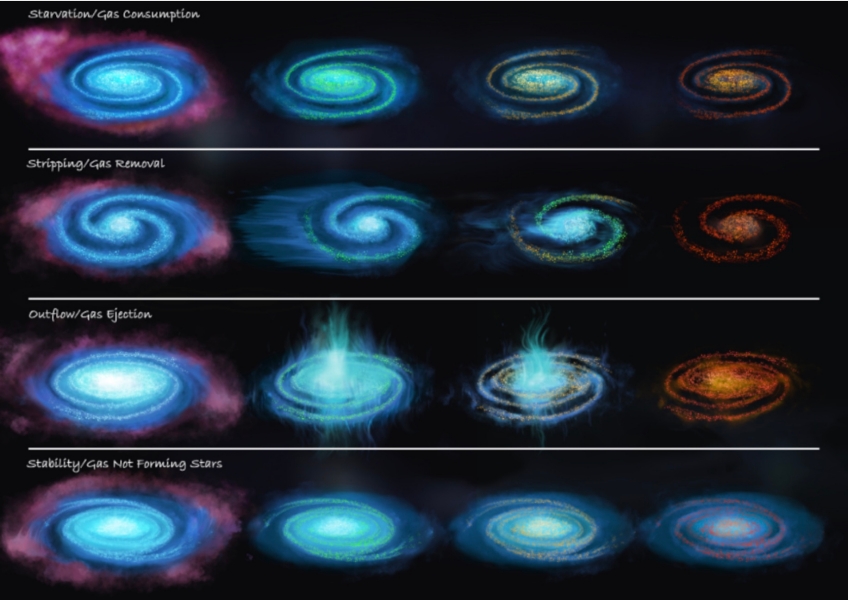Thesis Topic: Dissecting the satellite quenching process by process
Thesis Supervisor: Paola Popesso
Abstract
Satellite galaxies account for ~40% of the local galaxy population, and most of them reside in the numerous galaxy groups. Differently from centrals, they are connected to their host halo through a combination of distinct processes that involve the pre-processing of the galaxy as central or satellite of an accreting group and a series of interactions with the halo environment itself. A complex interplay of few or all these processes leads satellites in massive halos, such as groups and clusters, to be more frequently passive in the local Universe, with respect to central galaxies at the same stellar mass and inhabiting lower mass halos. Indeed, they tend to occupy the region below the Main Sequence of star-forming galaxies, where they represent the majority of the quenched galaxy population at stellar masses below 1010.8-11 M◉. For this reason, these processes are called „satellite quenching“, and are considered key to understanding the evolution of more than half of the local quenched galaxy population.
Nevertheless, clarifying the relative role of the satellite quenching processes is a complicated task. It requires relating the morphology, the star formation spatial distribution and cold gas content of satellites to the properties of the hot ambient medium and the velocity distribution of the other galaxy members at a larger scale. Indeed, this is mandatory to disentangle ram pressure stripping from tidal phenomena. In this respect, the unprecedented statistics of eROSITA will definitively change our perspective. Indeed, thanks to eROSITA, it will be possible to relate the morphology, star formation and gas spatial distribution of ~3000 satellites identified in the IFU MaNGA, SAMI and CALIFA surveys to the hot gas content of their host halo from clusters to low mass groups. This will allow estimating with accuracy the occurrence of disturbed morphologies in the gaseous or stellar component and establishing if they are related to ram pressure stripping due to the hot gas or tidal phenomena. Similarly, we will use radio ALFALFA and new ASKAP data from the Widefield ASKAP L-band Legacy All-sky Blind surveY (WALLABY) to study the relation between the cold gas mass fraction of satellites and the gas X-ray luminosity on large and local scale to quantify the efficiency of gas stripping from small groups to massive clusters.

Figure Caption: The various quenching pathways and what happens to the cold gas component of the interstellar medium (blue). Each sequence begins with the galaxy no longer accreting gas from the surrounding area (pink). The colour of the stars (from young, blue stars to old, red stars) indicates the quenching stage (Credit: Cortese et al. 2021).

